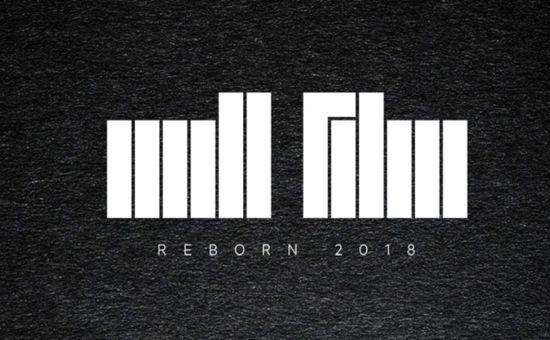
Robin Shenfield on Mill Film's Rebirth

Technicolor-owned VFX and post house The Mill is back in the movie game. Today it was revealed that Mill Film is set to be reborn with a huge new studio hub in Adelaide, South Australia. And while the news that the Oscar-winning feature film unit is returning has triggered nostalgia waves across the industry, perhaps no one is more excited than CEO Robin Shenfield. Since the news broke this morning, he has been inundated with messages of good will from across the industry.
So why revive the feature film arm of The Mill now? Well, the environment has changed massively, with a boom of content-hungry streaming services with money to burn on eye-popping movies and bingeable box sets.
“Everything in a business like ours, which is essentially a creative service business, is in response to client demand,” says Robin. “Of course, there’s an unprecedented demand for high end visual effects both from the studio sector but also from the streaming sector. There are over 400 different dramas from Amazon, Netflix etc., so there’s a massive amount of high end content being created and we and Technicolor felt that there was an opportunity for us to enter the market and essentially for Mill Film to be a parallel to The Mill.”
As industry watchers know, Moving Picture Company (MPC) is another member of the Technicolor family that has a movie VFX division. But Robin says that Mill Film and MPC Film are operating in fairly different niches. While MPC Film has garnered acclaim with its almost entirely CG-driven movies for Disney, like Jungle Book and the upcoming Lion King remake, Mill Film has its sites set on another sort of movie.
“Where the two businesses differ – by design – is that MPC Film is obviously extraordinary and a formidable business, but they have made a name for themselves doing big, highly complex pieces of work. There is a niche in the market place, in entering what we hope will be that top tier of visual effects work for film in playing a part on projects, where you’re dealing with, perhaps, a few hundred shots and not a whole computer-generated movie like Jungle Book,” explains Robin.
This isn’t the first time that The Mill has worked in the movie world. Between 1997 and 2002 Mill Film pioneered Britain’s feature film VFX industry. It took home the first VFX Academy Award to be won by a UK company for Ridley Scott’s Gladiator. It also did ground-breaking work on the likes of Harry Potter and the Sorcerer’s Stone. And, lest we forget, its very first movie project was Babe. However, the market has moved on considerably since then. Mill Films 2.0 is not resting on nostalgia but looking to the future – hence its state-of-the-art facility.
The new division will be housed largely in the aforementioned centre in Adelaide, and is due to open its doors by the end of the year. The studio will be a whopping 3000m2 and it marks a A$26 million investment – the South Australian government is providing a A$6 million grant from its Economic Investment Fund as it believes the studio will result in a A$253 million boost to the local economy over 10 years.
The sunny Australian city may not be on everyone’s radar as a VFX and post hot spot, but it’s actually home to around a thousand or so people who already work in the industry and companies like Rising Sun Pictures, Kojo and Resin. South Australia has also expanded its post production, digital and visual effects (PDV) rebate benefit, meaning that they are serious about attracting more creative film business to the area.
Robin says that Adelaide stood out for several reasons. The tax incentive, he says, is an important part of producing global work for clients – however there’s a lot more going for Adelaide than that. Not only does it have a pre-existing VFX community and a lively creative scene. There are strong local universities like the University of South Australia, Flinders University’s CDW Studio School of Visual Effects. Oh, and Adelaide has been ranked as the fifth ‘most liveable’ city in the world by The Economist two years in a row - it’s unsurprising, then that Robin has already been receiving emails from Mill folks about the possibility of moving down under.
In fact, when it comes to talent, Mill Films won’t have to create an entire team from scratch. The hope is that in five years time, the facility will be at least 500 people strong, but in the mean time Mill Film has talent, capabilities and resources from across both The Mill and Technicolor Group to draw from. Robin will be leading the roll out overall, but there will be management to be announced.
It gives Robin and Mill Film an enticing elevator pitch. “What’s kind of unusual is this is a business that is coming out of the pedigree of The Mill; this is the rebirth of an Oscar-winning brand; from launch it has a tool set that is best in class in the world. It allows it to operate with a fairly light overhead and leverage all the breadth and depth of the capabilities that already exist within Technicolor.”
As well as Mill Films’ huge Adelaide hub, it will also have a presence within The Mill LA. Naturally they’ll need a home for client-facing producers, business development people and management that’s close to Hollywood.
Mill Film’s return is also good news for The Mill’s current commercial offering too, not just from a cultural point of view but also in terms of raising the company’s profile in the consumer or mainstream sphere. “It’s a two-way flow,” says Robin. “There’s obviously a very strong culture of creativity and talent at The Mill that we’re going to extend to Mill Film. By the same token there are tools and capabilities that we’ll develop within Mill Film that will, over time, enhance the capabilities of The Mill.”
In recent years The Mill has been innovating on many fronts, from its adjustable CG car rig Blackbird, to virtual production toolkit Cyclops and its collaboration with Epic ‘The Human Race’. Robin’s seeing a coming together of commercial demands, the gaming world and technology – it makes sense to bring feature film back into the mix.
“In our industry there’s a huge convergence of technology and innovation and it’s happening very rapidly across game, film and advertising and immersive experience, so it’s a very natural extension for us to do this at this moment in time,” says Robin. “And while you need a very dedicated team and resources that’s utterly dedicated to film, we do want to create a very porous relationship between The Mill and Mill Film in terms of technology and culture and innovation so we can ultimately maximise what both parts of the company can do for their respective clients.”
Over the coming weeks and months, we’ll likely hear more about new management and VFX talent, but for today, at least, The Mill is celebrating and enjoying the rebirth of a key part of its family.
“I’ve had some wonderful emails from across the industry and within The Mill today sharing our excitement, reigniting a brand that people still celebrate - and that’s a nice feeling for us. I think we’ve got a lot of good will and momentum from clients, from current and former staff and from across the industry. And, indeed, from South Australia, a local government that wants to stimulate the industry there and build upon what’s already been created by others,” says Robin. “I’m very excited about being down in Adelaide.”













